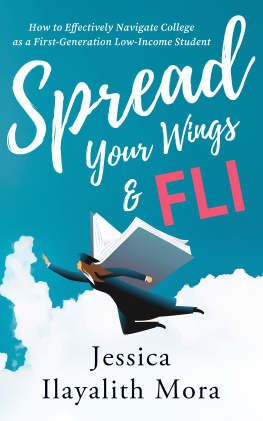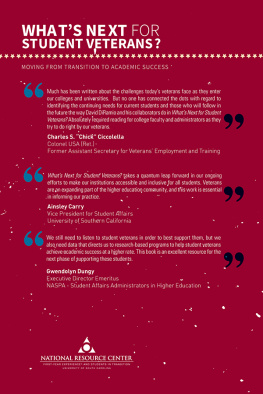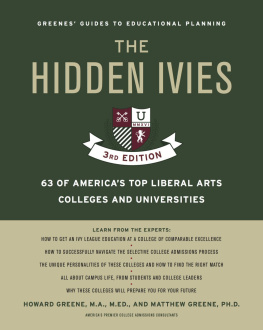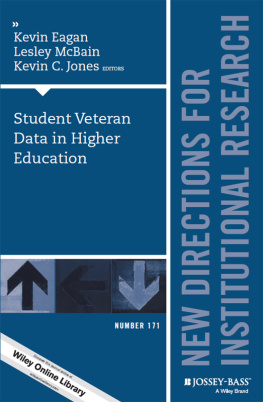ADAPT AND OVERCOME
ESSAYS ON THE STUDENT VETERAN EXPERIENCE
First Edition
by Mary E. McNaughton-Cassill
University of Texas San Antonio

Bassim Hamadeh, CEO and Publisher
Michael Simpson, Vice President of Acquisitions and Sales
Jamie Giganti, Senior Managing Editor
Jess Busch, Senior Graphic Designer
Marissa Applegate, Senior Field Acquisitions Editor
Natalie Lakosil, Licensing Manager
Kat Ragudos, Interior Designer
Copyright 2016 by Cognella, Inc. All rights reserved. No part of this publication may be reprinted, reproduced, transmitted, or utilized in any form or by any electronic, mechanical, or other means, now known or hereafter invented, including photocopying, microfilming, and recording, or in any information retrieval system without the written permission of Cognella, Inc.
First published in the United States of America in 2016 by Cognella, Inc.
Trademark Notice: Product or corporate names may be trademarks or registered trademarks, and are used only for identification and explanation without intent to infringe.
Cover photo taken by Aaron Cassill.
Printed in the United States of America
ISBN: 978-1-5165-3774-7 (ebk)

CONTENTS
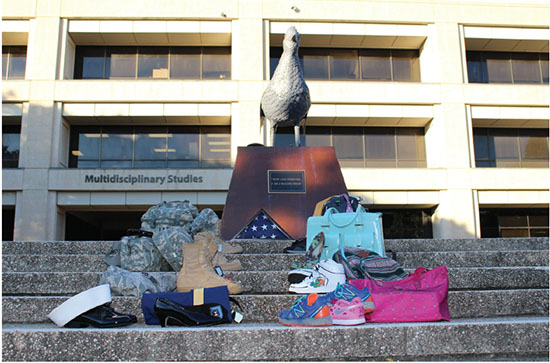
DEDICATION
This book is dedicated to the military service members who devote their time, energy, and lives to protecting our country, and in particular to the veterans who took time out of their very busy lives to share their experiences in this volume.
I would also like to thank and acknowledge the following people:
Jessica Knott, the editor extraordinaire who provided the idea for this book, and who was invaluable in helping me to initiate and organize this project.
Sandra Pahl, a former UTSA and UTAustin student, now a clinical psychologist in the US Navy, who generously reviewed the manuscript and shared her insights throughout the process.
Carolyn Cassill, my daughter, a graduate of UTAustin and aspiring neuropsychologist, who carefully read, edited, and organized all of the essays in this volume, and who also served as my personal technology assistant!
My daughter Julia Cassill, sister Caren Edwards, and husband Aaron Cassill for helping me mind all the gaps that arose over the course of this project.
PREFACE
The Veteran Student Narrative
Mary McNaughton-Cassill
Humans have long been storytellers, whether they were drawing on cave walls, writing about great battles, listening to travelling storytellers, or singing about romance. Although animals can learn from each other through observation, sounds, and nonverbal signals, our language capabilities enable us to share complex, abstract information and technological expertise with individuals and across generations. In fact, it is hard to underestimate the value of human storytelling as a means of transmitting survival techniques, fostering innovation, and sharing cultural beliefs. Storytelling also enables us to envision the future and talk about the past, thereby allowing us to move back and forth on the continuum of time. With the advent of technology, our ability to convey those stories has expanded exponentially. Radio, television, and the Internet make it easy for people around the world to share their stories and experiences. On a personal level, social media, including Facebook, Twitter, blogs, etc., provides us with a means of sharing our personal stories with others. The fact that we can edit, alter, and rewrite versions of ourselves is one of the main reasons these media are so popular.
Psychologists and biologists argue that our brains are predisposed to be social, and that we remember facts better when they are part of a story, particularly if the narrative involves arousal and emotion. This tension helps us remain focused, while the feelings help us stay engaged. Certainly, the entertainment value of storytelling has never been higher. Never before have so many people had access to so many sophisticated stories via television, movies, theater, music, dance, the internet, and electronic and paper books. But, paradoxically, this surfeit of options means that we never feel we have enough time to see and do everything, and have to find ways to choose what we do want to view based on both our individual, and cultural views and beliefs. In short, when picking the stories we want to consume, we are in affect, also writing our own life story.
Since the 1970s, psychologists have been studying how the stories we tell ourselves shape our worlds, our relationships, our expectations, and our emotional states. This field, often referred to as narrative therapy, is based on the idea that our storytelling brains are constantly recording, revising, and developing our personal screenplays. As we move through life, we frame and reframe our experiences, change our attributions about our choices, and revise our memories each time we revisit them. This is due in part to the fact that the brain is predisposed to seek closure, to make logical assumptions, and to fill in gaps when we are missing information. Without this ability, we would have difficulty functioning in our complex three-dimensional world, where much of the sensory information we take in is incomplete, our future is often unpredictable, and our present is restricted to our personal awareness. For many of us, our childhood memories are less an accurate personal memory and more a memory of the stories those around us have relayed. Of course, this ability to fill in the blanks also means that we can choose to focus on details that support our belief system and to ignore those that dont. If we have settled on a particular theme for an event, or our life story, we may then organize our recollections to reflect our sense of ourselvesas a victim, a warrior, a loner etc. From a therapeutic point of view, narrative therapy approaches often attempt to identify how an individuals self-narrative is helping or hindering his or her psychological adjustment, and how it can be used to alter or shape new and more adaptive views of old events and assumptions. Many of our returning service members have painful stories to tell, and there is increasing attention on whether telling these stories can help them deal with their anxiety and stress. For example, the work of James Pennebaker (2004) suggests that simply writing about events in your life, whether or not anyone else reads what you write, can help people process and cope with traumatic memories.
Another part of the story that is less frequently told is how veterans adjust after leaving the military. We hear about spectacular successes and failures, but what about those in the middle? Many veterans reestablish their lives, returning to their homes, families, and communities. In some cases, they take up their pre-military careers. Other vets use their benefits to return to school. While in theory this can seem like a logical next step, on a personal level, this may not be an easy transition. Veterans often feel as though they are in a strange new world. Certainly, the military and academia are vastly different cultures, with their own sets of rules, practices, goals and stories. Consequently, veterans may struggle to find their way around campus, and the campus community often doesnt understand what they are going through, let alone how to help them.
Next page

